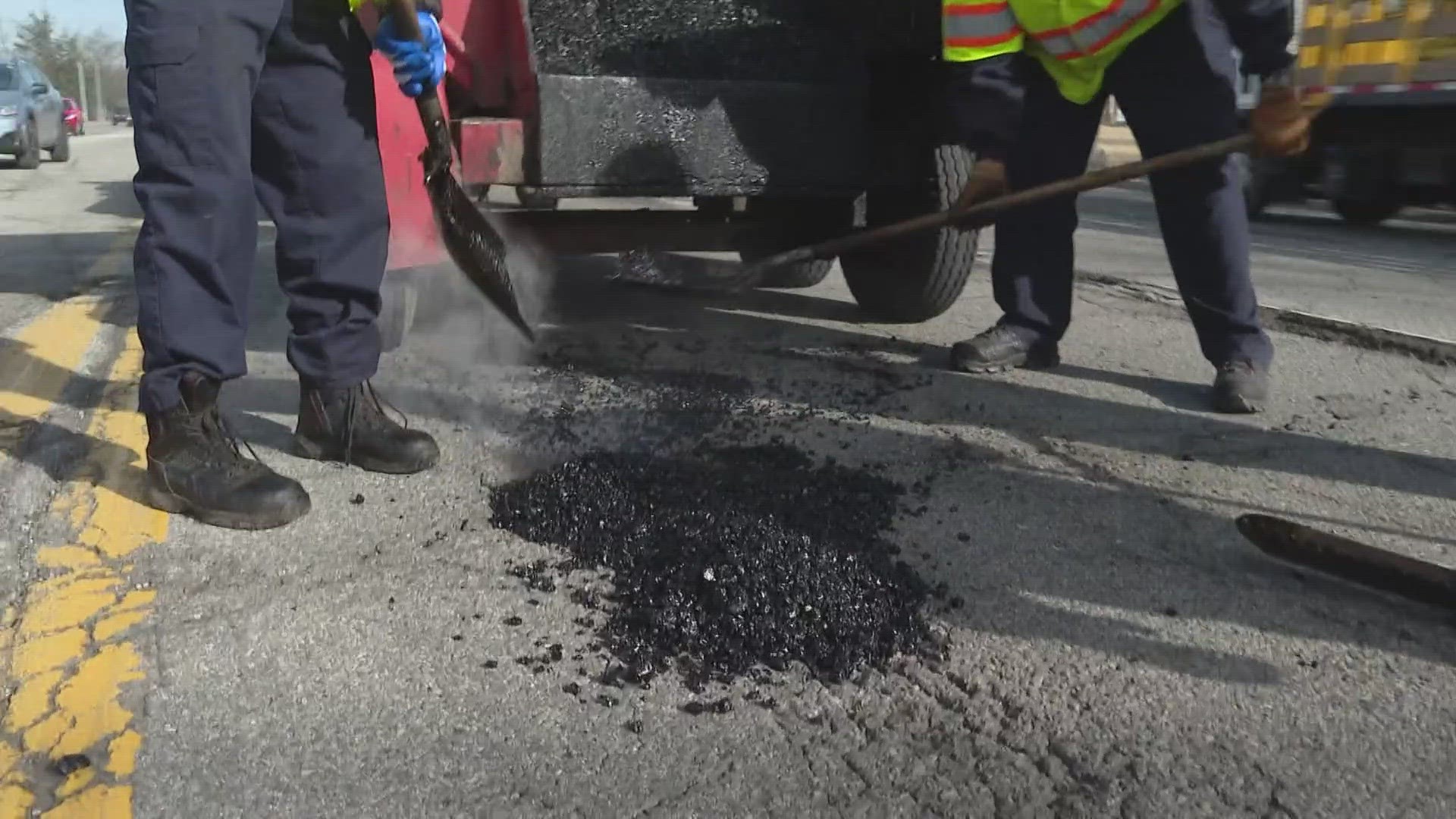Optimize Area Effectiveness with Hot Mix Asphalt Angled Parking Lot Solutions
Optimize Area Effectiveness with Hot Mix Asphalt Angled Parking Lot Solutions
Blog Article
Opening the Keys of Hot Mix Asphalt Innovation
Discovering the midsts of warm mix asphalt innovation uncovers a globe where precise formulations and meticulous procedures merge to shape our roads and infrastructure. The fusion of fillers, aggregates, and binders isn't just a building job yet a strategic orchestration of resilience and efficiency. As we peer into the elaborate dance of parts, a tapestry of durability and sustainability unfolds. What exists under this surface of asphaltic proficiency, and what secrets wait to be introduced in the world of leading innovations?
Importance of Warm Mix Asphalt
Warm Mix Asphalt plays an important duty in modern-day framework development due to its longevity and cost-effectiveness. As the most commonly used paving material for roads, highways, and vehicle parking lots, Hot Mix Asphalt supplies a range of advantages that contribute to its value in building tasks.
The sturdiness of Hot Mix Asphalt originates from its make-up, that includes accumulations, binder, and filler materials that are meticulously picked and blended to satisfy particular performance demands. This accurate mix leads to a flexible and solid sidewalk that can withstand frequent usage without significant damage. Moreover, Warm Mix Asphalt is 100% recyclable, more improving its sustainability and environmental benefits. In general, the importance of Warm Mix Asphalt in infrastructure growth can not be downplayed, as it continues to be a cornerstone of modern-day building practices.
Parts of Asphalt Mixes
The structure of asphalt blends contains meticulously selected accumulations, binder, and filler materials that are vital for accomplishing specific performance needs. Aggregates are the main component of asphalt mixes, providing stamina and security. These accumulations can be all-natural, such as gravel or crushed rock, or synthetic, like recycled products from old sidewalks. The binder, generally asphalt or asphalt cement, holds the accumulations with each other and provides versatility and durability to the mix. The selection of the binder is vital as it directly affects the mix's performance in different climate problems. Fillers, such as moisturized lime or Portland cement, are utilized to boost the mix's workability and aging resistance. Angled Parking.
The mix and percentage of these parts play a considerable duty in determining the top quality and performance of the asphalt mix. Engineers thoroughly create the mix to fulfill particular requirements, thinking about variables like website traffic quantity, environment conditions, and pavement life-span. Correct option and harmonizing of accumulations, binder, and fillers are vital for producing long lasting, resilient asphalt pavements.
Combining and Production Strategies

When the accumulations are chosen, the binder, commonly asphalt concrete, is contributed to bind the materials with each other. The binder's high quality and amount significantly impact the mix's resistance, strength, and adaptability to environmental factors. Additionally, fillers like moisturized lime or Rose city concrete might be integrated to improve particular characteristics of the asphalt mix, such as its workability or wetness resistance.
Throughout manufacturing, the aggregates and binder are heated, generally between 250-325 ° F(121-163 ° C ), to promote blending and make certain correct finish of the aggregates. The blending procedure should be comprehensive to achieve an uniform blend that promotes the wanted performance qualities of the asphalt. Different techniques, such as set mixing or drum blending, are utilized to attain consistent and high-quality asphalt mixes for construction jobs.
Elements Impacting Asphalt Efficiency
Aspects influencing asphalt efficiency encompass a variety of variables that impact the longevity, durability, and total high quality of asphalt pavements. One crucial aspect is the high quality of products utilized in the asphalt mix. The kind and source of aggregates, the binder top quality, and the ingredients all play a considerable duty in determining the efficiency of the asphalt pavement. The rank of accumulations is vital as it affects the mix's resistance, workability, and security to breaking and rutting.

Style factors to consider, such as sidewalk thickness and drain, are crucial in guaranteeing the lasting efficiency of the asphalt sidewalk. By carefully thinking about these designers, contractors and factors can enhance asphalt efficiency and enhance the service life of pavements.
Lasting Practices in Asphalt Innovation

Furthermore, the growth of warm-mix asphalt (WMA) innovations has gained traction in recent times. WMA enables the production and positioning of asphalt mixes at lower temperature levels compared to conventional hot-mix asphalt, causing lowered energy usage and greenhouse gas discharges. The usage of permeable asphalt blends can help alleviate stormwater drainage concerns by enabling water to infiltrate with the pavement and into the ground, promoting all-natural water filtration and charge processes. By implementing these lasting methods, the asphalt market can add to building an extra eco-friendly and durable infrastructure network.
Final Thought
In final thought, hot mix asphalt technology plays a vital role in contemporary infrastructure growth due to its resilience and cost-effectiveness. By thoroughly stabilizing components, utilizing correct mixing techniques, and considering various variables, engineers can produce premium asphalt blends that endure hefty traffic lots and harsh climate condition. Welcoming lasting practices, such as making use of warm-mix technologies and recycled products, better boosts the ecological kindness of asphalt modern technology.
Mixing and production methods in warm mix asphalt innovation entail the exact mix and handling of accumulations, binder, and fillers to produce a resilient and high-performance asphalt mix.Aspects influencing asphalt efficiency incorporate a range of variables that impact the sturdiness, durability, and general top quality of asphalt pavements. Lasting practices in asphalt modern technology include numerous initiatives aimed at decreasing the ecological impact of asphalt production and paving procedures. By incorporating reclaimed asphalt pavement (RAP) and recycled asphalt shingles (RAS) right into brand-new asphalt mixes, the industry can substantially reduce the usage of raw products and energy, while additionally decreasing garbage dump waste.
WMA permits for the production and placement of asphalt blends at reduced temperature levels compared to conventional hot-mix asphalt, resulting in lowered energy intake and greenhouse gas exhausts.
Report this page